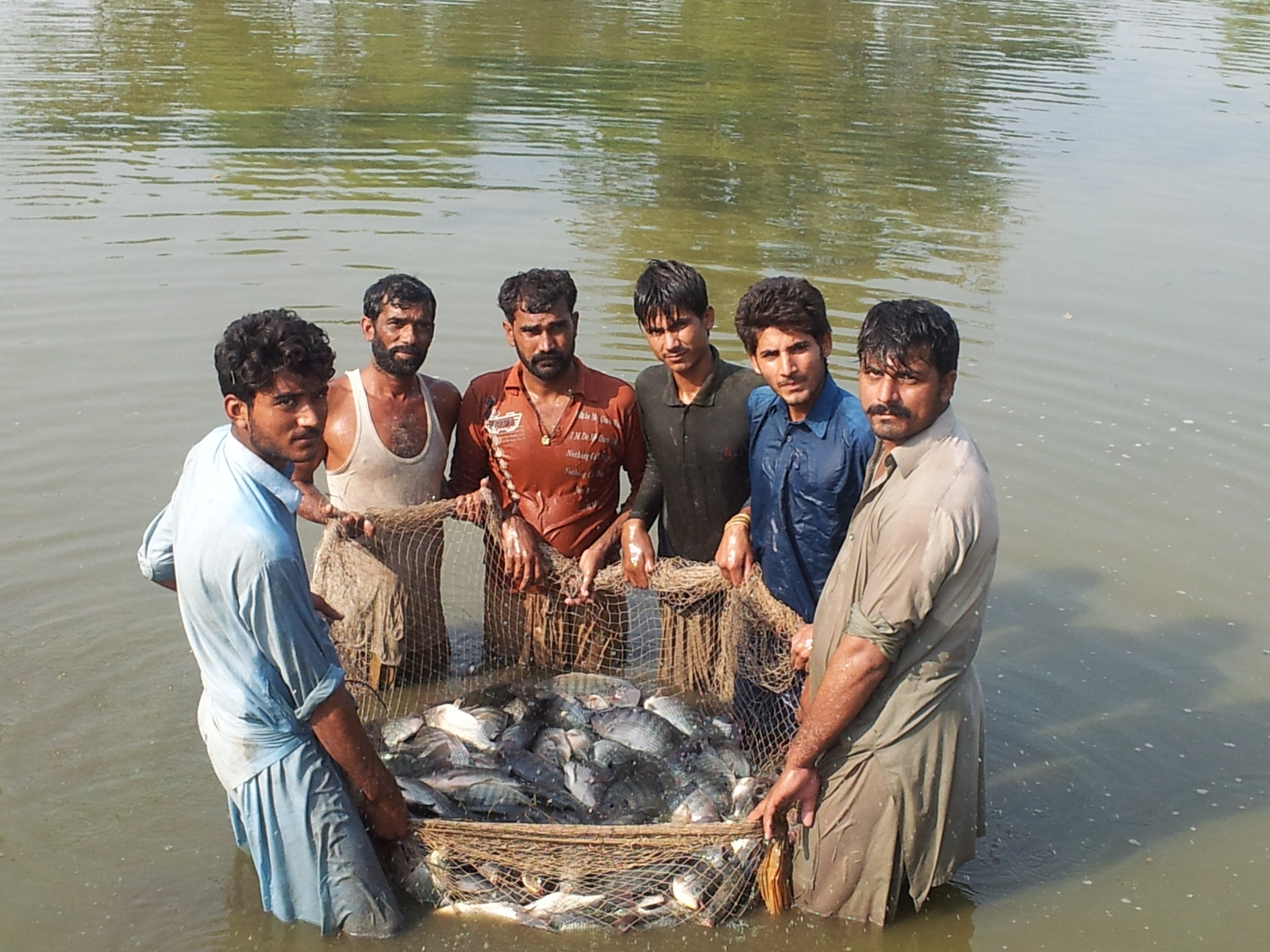Tilapia from ‘farm to plate’ using US soy

A landmark fish feed programme in Pakistan is proving that US soybean meal is a powerful ingredient for Asian aquaculture to grow and meet the protein needs of the world’s sixth most populous country.
By Fabian Brockötter
The American Soybean Association’s (ASA) World Initiative for Soy in Human Health (WISHH) is implementing the FEEDing Pakistan Project with funding from the US Department of Agriculture’s (USDA) Foreign Agricultural Service (FAS). The three year effort supports the Pakistani government’s priority to reduce the ‘protein gap’ and meet the protein needs of the country’s 187 million people. ”Marine fish catch is down and processing plants are running at approximately 30% of their capacity,” says ASA/WISHH Country Representative-Pakistan R.S.N. Janjua. “FEEDing Pakistan reduces the protein gap through the introduction and production of high protein fish feeds made with soy.”
Pakistan has an extensive system of fish farming but no commercial floating fish feeds were produced in the country until FEEDing Pakistan. The initiative focuses on improving capacity, productivity and quality in the Pakistani aquaculture sector. To accomplish these goals, the programme reaches local fish farmers, Pakistani government officials and commercial members of the aquaculture industry. Key partners are the USDA Foreign Agricultural Service, Pakistan Fisheries Development Board, Pakistan Provincial Ministry of Livestock and Fisheries, Pakistan fish farmers and feed millers, Kansas State University, Kansas Soybean Commission and Oryza Organics.
Assessing the six main components
Findings from the 2012 assessment showed stakeholders in the Pakistani aquaculture industry widely recognise that aquaculture and restoration of the environment are the primary solutions to overfishing and environmental degradation in the country. Results also noted the lack of formulated, extruded, floating feeds as a key constraint to growth in the aquaculture sector. Public and private fish growers expressed a willingness to purchase high quality floating feeds if the improvement in yields and efficiency would match the increased cost.
Feeding demonstrations with US soybean meal
ASA/WISHH provided US soy-formulated floating feed for feeding demonstrations. FEEDing Pakistan demonstrated tilapia fish averaged 600 grams per fish – double the weight of traditional Pakistani fish harvests. The tilapia received a premium in the local market place and increased enthusiasm for further development of Pakistan’s aquaculture industry with soy-based fish feeds. “Farmers had never seen such results,” Janjua said.
Outreach to fish farmers and allied industry
FEEDing Pakistan hosted farmer field day events at seven sites throughout Pakistan in 2012 and three additional field days in 2013. The events provided an opportunity for stakeholders to witness the harvest of tilapia fed high protein fish feed produced with US soybean meal. More than 600 participants attended the events including progressive fish farmers, members of academia, research fellows, fish traders, feed millers, federal government officials, provincial government officials, representatives from the fisheries department and members of the media. The growth of the fish throughly impressed the attendees.
Technical assistance with Kansas State University
Pakistani aquaculture supply chain representatives, including Oryza Organics’ CEO Zaquob, attended the FEEDing Pakistan two-week training course at Kansas State University (KSU) in the US in 2012. Participants learned about the value of extruded feed made with soybean meal and visited an extrusion equipment manufacturing facility. “They went back with a lot of out-of-the-box thinking,” Janjua said.
US soy processing equipment
The Kansas training convinced Mr Zaquob of the potential for growth in the aquaculture industry. He returned to Pakistan to consult with his business partners at Oryza, located outside of Lahore. Oryza and ASA/WISHH placed the order for the extrusion equipment from Extru-Tech International of Sabetha, Kansas. As a result, Orzya formally inaugurated Pakistan’s first extruder for the production of floating fish feed in July 2013. Under FEEDing Pakistan, WISHH shipped 25 metric tons of US high proteine soybean meal to jumpstart the floating fish feed manufacturing.
Zaquob knows that the industry needs time for growth and that capacity for production will likely exceed initial demand. Instead of running the newly purchased equipment below capacity, he reached out to the University of Veterinary & Animal Sciences (UVAS). The University was interested in the results of the FEEDing Pakistan programme and had 31 ponds, including some that were idle at their Pattoki campus. Zahid entered into a memorandum of understanding with the university to draw on each of their strengths.
Under the memorandum, Zahid will rent 10 ponds from the university. He will stock them with tilapia and feed the fish Oryza’s soy-based floating feed. Oryza has imported 36,000 tilapia fry from Thailand to fill the ponds. The feeding demonstration on the UVAS campus will give students the opportunity to be involved in research around the ponds as well as get hands-on training. The partnership also gives Oryza access to the University’s laboratory facilities.
Other aquaculture stakeholders who participated in the KSU training courses have also returned to Pakistan to make increased investments in their farms and manufacturing facilities.
A new aquaculture handbook
In 2014, ASA will author and print an aquaculture and fish nutrition handbook. This handbook will serve as a reference book for fish farmers, members of academia, feed millers, entrepreneurs, government officials and other stakeholders, and will cover basic topics related to aquaculture and fish nutrition. FEEDing Pakistan will print and distribute approximately 1,000 copies to industry stakeholders throughout Pakistan.
FEEDing Pakistan’s work has confirmed that aquaculture in Pakistan has significant potential; resources of talent and experience in the country are available to continue to improve the industry. According to a USDA Global Agricultural Information Network (GAIN) report published earlier this year, there is great potential for an increase in US soybean meal exports to Pakistan to be used for fish feed production. The report forecasts a 525% increase in aquaculture production in Pakistan and an increase in demand for soybean meal from 42,000 tons to 260,000 tons. Such projections highlight the significant nexus between trade and development programmes.
All About Feed 21.10 2013











